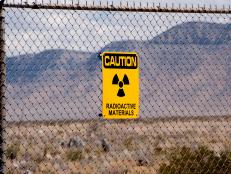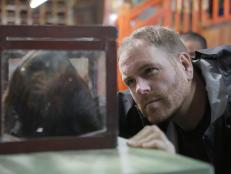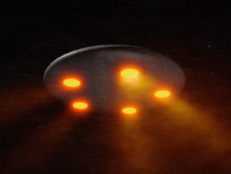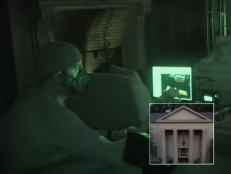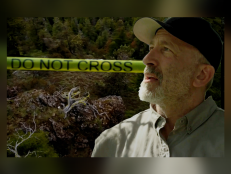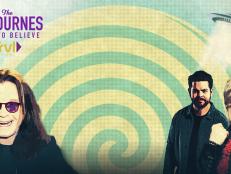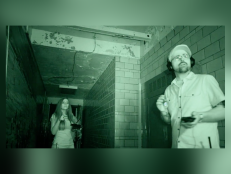What We Talk About When We Talk About Aliens
It's been a hot summer for news of what (or whom) we might one day encounter in outer space — and Josh Gates will join the conversation this fall with Expedition Unknown: Hunt for Extraterrestrials.

In the upcoming Hunt for Extraterrestrials four-part series, Josh Gates and the Expedition Unknown team travel more than 50,000 miles to connect with alleged eyewitnesses, experts and even astronauts in search of answers to one of the oldest (and most controversial) questions mankind asks: Are we alone in the universe? Scientists contend we have no evidence of alien life, while if innumerable Internet chat rooms are to be believed, extraterrestrials are among us right now. As Josh prepares to share what he’s learned from searchers (and researchers) on four continents, let’s consider a few of the oldest, newest and wildest theories and observations about potential neighbors—and visitors—from outer space.
1960: Frank Drake conducts the first modern ‘search for extraterrestrial intelligence’ (SETI)
More than a half-century ago, a radio astronomer at the National Radio Astronomy Observatory in West Virginia developed what is now known as the Drake Equation, a thought experiment that tells us what we need to know to estimate the number of “civilizations in the Milky Way Galaxy whose electromagnetic emissions are detectable.” In 1974, with that equation in mind, Drake helped send the Arecibo message, a pictorial communication beamed from a powerful telescope in Puerto Rico toward a star cluster more than 22,000 light years away. (Spoiler: The star cluster has yet to beam back at us, though some crop-circle enthusiasts contend otherwise.) Researchers still consider the equation a useful tool, and Drake’s SETI Institute has been an educational nonprofit since 1984. Speaking of 1984...
1984: Martian meteorite discovered in Antarctica

NASA/SCIENCE PHOTO LIBRARY
Wait, is there life on Mars? A meteorite dubbed ALH84001 made the trip from the Red Planet to Antarctica, where it was found and turned over to scientists at NASA and Stanford University. A decade later, their electron micrographs yielded tube-like structures that could be microfossils of primitive, bacteria-like organisms that would have lived on Mars billions of years ago. It should go without saying that other scientists have been arguing about this ever since.
2008: NASA beams “Across the Universe” to the stars
To commemorate the 40th anniversary of the Beatles’ celebrated song (and the organization’s own 50th birthday), NASA’s Deep Space Network transmitted the tune to Polaris, which is 431 light years away from Earth. “Amazing! Well done, NASA! Send my love to the aliens,” Paul McCartney said. “I see that this is the beginning of the new age in which we will communicate with billions of planets across the universe,” Yoko Ono added. That light-speed transmission won’t reach the North Star until we’re all long gone (with the possible exception of Keith Richards), but one can hope that the Deep Space Network will still be around to receive the music of the spheres, should the locals choose to respond.
2010: Stephen Hawking does not want to issue interstellar invitations
Hawking’s three-part documentary series for Discovery Channel, Into the Universe with Stephen Hawking, leaves little ambiguity about his feelings on extraterrestrial visitors. Voiced by Benedict Cumberbatch, he notes that “[i]f aliens visit us, the outcome would be much as when Columbus landed in America, which didn’t turn out well for the Native Americans.”
He believes we should keep our communiqués to ourselves and discourage ETs from popping in for a visit, since their technologies would very likely be vastly superior to ours.
“Such advanced aliens would perhaps become nomads, looking to conquer and colonise whatever planets they can reach,” Hawking said.
Why on Earth (literally) would you ask someone over when you don’t know what sort of guest they might be?
“To my mathematical brain, the numbers alone make thinking about aliens perfectly rational. The real challenge is to work out what aliens might actually be like," he said.
July 2017: Polish scientists report detection of Earth-like ‘rogue’ planets
Last month, researchers at work on the Optical Gravitational Lensing Experiment (or OGLE, a marvelous acronym) at the University of Warsaw’s Astronomical Observatory reported analysis of light curves around dark objects that “imply the existence of a large population of Earth-mass free-floating planets”—which “some scientists speculate could play host to life,” according to outlets like the Daily Mail. Proponents of this theory argue that while life would be difficult on these frigid, solar-system-less planets, liquid oceans with submarine aliens could exist beneath their frozen crusts. (Psst: Josh Gates travels to Chile in Hunt for Extraterrestrials for a first-hand look at the technology that yields OGLE’s futuristic findings—and to make his own mind up about what those findings could mean.)
July 2017: NASA posts job opening for 'Planetary Protection Officer'
Call it the Help Wanted ad heard 'round the world: Not since last June (when Extra Crispy announced its search for a freelance bacon critic) has an employment opportunity created so much buzz. What NASA actually wants is someone to help them maintain policies to avoid “organic-constituent and biological contamination in human and robotic space exploration”—no Martian germs on Earth, thank you—but what it is getting is applications from alien fighters around the world. The most adorable of those could be nine-year-old Jack Davis, who wrote that “I am young, so I can learn to think like an alien,” and that his sister maintains that he is one. (NASA wrote back to thank him for being a “Guardian of the Galaxy.”)
Stay tuned for sneak peeks of Expedition Unknown: Hunt for Extraterrestrials, citizens of Earth—and keep your eyes on the skies between now and October, just in case.




